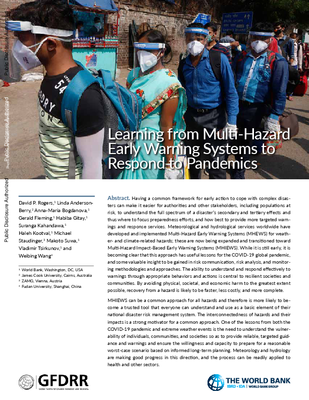Learning from Multi-Hazard Early Warning Systems to Respond to Pandemics
Having a common framework for early action to cope with complex disas-ters can make it easier for authorities and other stakeholders, including populations at risk, to understand the full spectrum of a disaster’s secondary and tertiary effects and thus where to focus preparedness efforts, and how best to provide more targeted warn-ings and response services. Meteorological and hydrological services worldwide have developed and implemented Multi-Hazard Early Warning Systems (MHEWS) for weath-er- and climate-related hazards; these are now being expanded and transitioned toward Multi-Hazard Impact-Based Early Warning Systems (MHIEWS). While it is still early, it is becoming clear that this approach has useful lessons for the COVID-19 global pandemic, and some valuable insight to be gained in risk communication, risk analysis, and monitor-ing methodologies and approaches.

Resource Type
PDF, 544.96 KB
Year
2019
Content Type
Academic papers
Theme
Compound risk, Early Warning System
Hazard
Epidemic / Pandemic, Multiple

